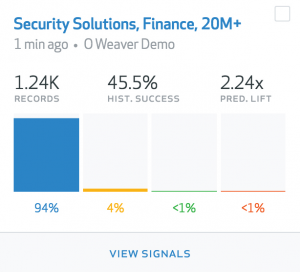Redesigning your website can provide a variety of benefits for your online presence, including refreshing your brand image or bringing traffic and conversions to less popular pages. But a website redesign is something that should be done carefully and with planning. Helpful changes to your website can boost your traffic, but changes that confuse your audience will tank it.
How often to redesign your website
The average lifespan of a business website is 1.5 to 2.5 years. The lifespan of your website can vary depending on your industry, budget, and branding needs.
Other factors — how long your site is functional, how useful it is to customers, and whether changes in your industry require an update — also affect how often you’ll redesign your site. Look at others in your industry, what your customers are saying, and your past experiences to determine what a good time frame is for you.
Redesign vs. refresh
The terms redesign and refresh are often used interchangeably, but they aren’t.
A refresh of your website is surface level, like a new coat of paint. The base code remains the same, but some visual elements like color scheme and typography are changed. The website still functions in the same way, it just looks different.
A redesign is a significant change to the look, user interface (UI), and code of your website. The site functions differently than it did before and often includes a new content management system (CMS). Done well, this can lead to increased traffic, conversions, and revenue.
Both refreshing your website and redesigning your website impact your customer’s experience, but one requires less work than the other.
So how can you tell if your website needs a redesign and not just a refresh? Here are a couple of things to watch for:
- How does your design look? Is it outdated?
- Are you noticing a drop in traffic?
- Are people complaining about how difficult the site is to use, or that it has issues like poor loading time?
If the answer is yes to these questions, it’s probably time for a redesign.
The Planning Phase
Once you’ve decided to redesign your website, you need to figure out how you’re going to do it. This involves setting benchmarks, measuring success, and calculating risk.
It’s important to map out which changes you’re planning, then assign those changes an estimated risk value based on how likely they are to affect conversions on your website. If you’re planning to change the homepage, how likely is it that the change will improve the customer’s experience? Is anything likely to confuse them instead?
This may seem tedious, but not taking the time to effectively plan can have disastrous results. If you don’t plan out what you want to change and you don’t A/B test it before a full launch, the redesigned website might completely turn customers off.
Redesigning your website
There are generally seven steps you can follow during a full website redesign to get good results:
- Analyze the old site to determine the most valuable pages.
- Figure out who your audience is and why they’re visiting your site.
- Determine how the redesign will impact your business.
- Plan out the messaging on your website.
- Look at what moves people further in the conversion process and what stops them.
- Determine what key performance indicators (KPIs) you’ll measure during and after the redesign.
- Decide what you’ll change and how to test those changes.
Quantifying and tracking these factors will help you stay on track with your goals and see how the website experience has changed for your visitors.
Analyze the old site
Look at the current website. Figure out which pages are performing well, and why. There are some pages you’ll want to be careful with, and others you can tear down and rebuild from scratch. Your top-performing pages should be changed very little. Throwing out your best pages will hurt your site’s traffic and confuse visitors.
Check the following metrics to see which pages are performing well and which can be improved:
- Bounce rate
- Time spent per page
- Top-performing page keywords
- Lead generation forms submitted
You can also examine the relationship between page traffic and the number of conversions that page gets. If a page is high-converting and has high traffic, it’s safe to leave it alone except for superficial changes. If a page has low traffic and low conversions, tear down and rebuild.
Figure out who your audience is and why they’re visiting
According to Google’s research team, people usually visit a website for one of four reasons:
- They want to learn something
- They want to contact or visit a business
- They want to know something about your brand or product
- They are ready to make a purchase
Your job is to figure out which reasons drive traffic to your most successful pages.
One way to try and get inside your visitors’ heads is to create customer personas — fictional representations of your ideal customer based on real-life data.
Analytics can show you the age of people visiting your website, how much money they make, where they live, and more. You can try and determine people’s needs based on that data, and what parts of the site they visit the most. What problems does it look like they’re trying to solve?
Determine how the redesign will impact your business
Everyone who works with your site and its visitors should know how the website will change. Your team should be a part of the redesign process from the very beginning so they can provide feedback on how to make the website easier for them to use.
Keeping your team in mind ensures the site will work well on the front and the back end.
Plan out the messaging on your website
Simple and functional is always best. Understandable language, clearly marked navigation tools, and clear calls to action (CTAs) go a long way toward converting visitors.
Know what you have to offer your visitors, and how you’re going to present that information. Then, make it clear and consistent across all your pages and social media channels. Wording, tone, color scheme, logo, images — all of those elements work toward having a unified message.
New visitors should understand what you do as soon as they arrive at your site, and its design should make them want to stay.
Look at what moves people forward in the conversion process and what stops them
Just as important as knowing your best-performing pages is knowing your worst. Where are people getting stuck? Why? These are the features you need to change to improve the visitor experience.
Figuring out the barriers to a good experience and the things that move people to the next stage of the conversion process is critical for effective site design. And you can learn a lot about both through collecting detailed data from your website.
Widgets like heat maps tell you where people click the most. If they’re not making it to your CTA at the bottom or clicking through to other pages, there might be a problem.
Recording demos can show you people’s behavior in real-time while they navigate the site and tell you what’s tripping them up. On-site surveys and feedback widgets can also let people comment on the page functionality as they use it.
It’s also important to get feedback from your team. Let them tell you what they’ve noticed about the site, where they think it can be better, and what they’ve heard from customers.
Determine your KPIs
You’ve outlined your site goals, now you need to determine how to measure them. Data analytics is great for this. The data can show you if a change is working. If the number of visitors, time spent on the page, or click-through rate increases, you’re doing something right.
If your business sells a product, revenue-related goals are helpful metrics to track. That can be the total average order value per customer, the total overall revenue, or customer lifetime value.
Most CRM (Customer Relationship Management) software programs will collect the data for you. Free platforms like Google Analytics have become excellent at it. But quantitative data is only part of the picture. Pay attention to qualitative metrics like the number of complaints or support tickets you get. Have they gone down? Up? Why?
Decide what to change and how to test it
Lots of businesses get tempted to totally overhaul their site and throw everything out — even the stuff that works. Avoid this temptation and instead make incremental, impactful changes while monitoring people’s responses. A/B test small changes and stack them to form larger overall changes.
Even if you don’t get enough traffic to A/B test changes, there are other ways to measure. Try conducting a few moderated usability sessions where people can give you their experience with the site as they’re using it. Ask questions about their experience using the site, any difficulties they have, and why they’re visiting your site in the first place.
Once you’re relatively sure your changes will be well-received, you can implement them and move on to the next round.
It’s never really done
Redesigning your website is an ongoing process. You should be constantly gauging people’s experience with the site and releasing updates accordingly. Do it for long enough and you’ll have it down to a science.
Digital & Social Articles on Business 2 Community
(58)
Report Post





